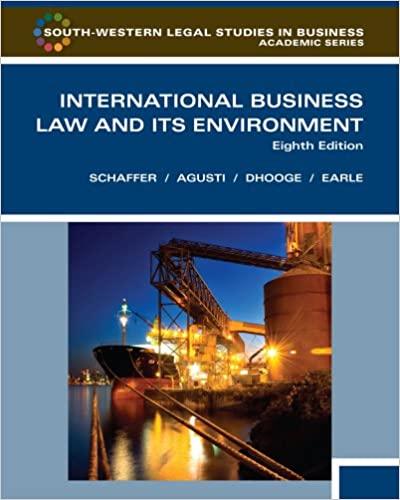Question
This is the topic: In June 2019, the Canadian province of Quebec passed Bill 21 banning certain categories of public employees from wearing religious symbols
This is the topic:
In June 2019, the Canadian province of Quebec passed Bill 21 banning certain categories of public employees from wearing religious symbols at work. Teachers, judges, police officers, among other civil servants, are prohibited from wearing symbols of their faith (including hijabs, kippahs, and turbans) in the workplace. The controversial law also prohibits anyone with religious face coverings from receiving government services, including healthcare and public transit. In enacting the ban, Quebec preemptively invoked the exceptional "notwithstanding clause", which allows provincial or federal authorities to temporarily override some of the guarantees of the Charter of Rights and Freedoms, making it difficult to overturn the law in the courts1. If the Supreme Court of Canada decides to hear the matter, what do you think the decision of the Court would be and what could that mean for the future of this right in Canada?
Could you help me by answering these questions?:
1) You must create a thesis.
2) You must identify the issue(s) that concerns you about the current status of the right of your choice. Once you have defined the issue(s), you must elaborate on how the courts have treated, analyzed and upheld that right. Look at other factors that contribute to such process, such as any legislation that exists in the field, and the politics around it.
3) It is necessary to make an explicit connection between law, justice and rights.
4) Look closely on who are the parties that mostly suffer from any violations of the right in question. Identify the key actors involved, or stakeholders (interveners) and define their respective positions and the existing or potential conflicts of interest. There are always some competing interests in every given case, and you must explicitly identify them.
5) Explore the history /background of the violations of the right and look for patterns. To do so, you must visit some of the jurisprudence (especially of the higher courts) and explore the evidence given in the cases.
6) Must provide a critical analysis, which includes an argument that is clearly positioned within a
conceptual framework and supported by a well-balanced discussion of relevant evidence.
It must also provide a concise conclusion that logically follows from the given analysis.
Step by Step Solution
There are 3 Steps involved in it
Step: 1

Get Instant Access to Expert-Tailored Solutions
See step-by-step solutions with expert insights and AI powered tools for academic success
Step: 2

Step: 3

Ace Your Homework with AI
Get the answers you need in no time with our AI-driven, step-by-step assistance
Get Started


